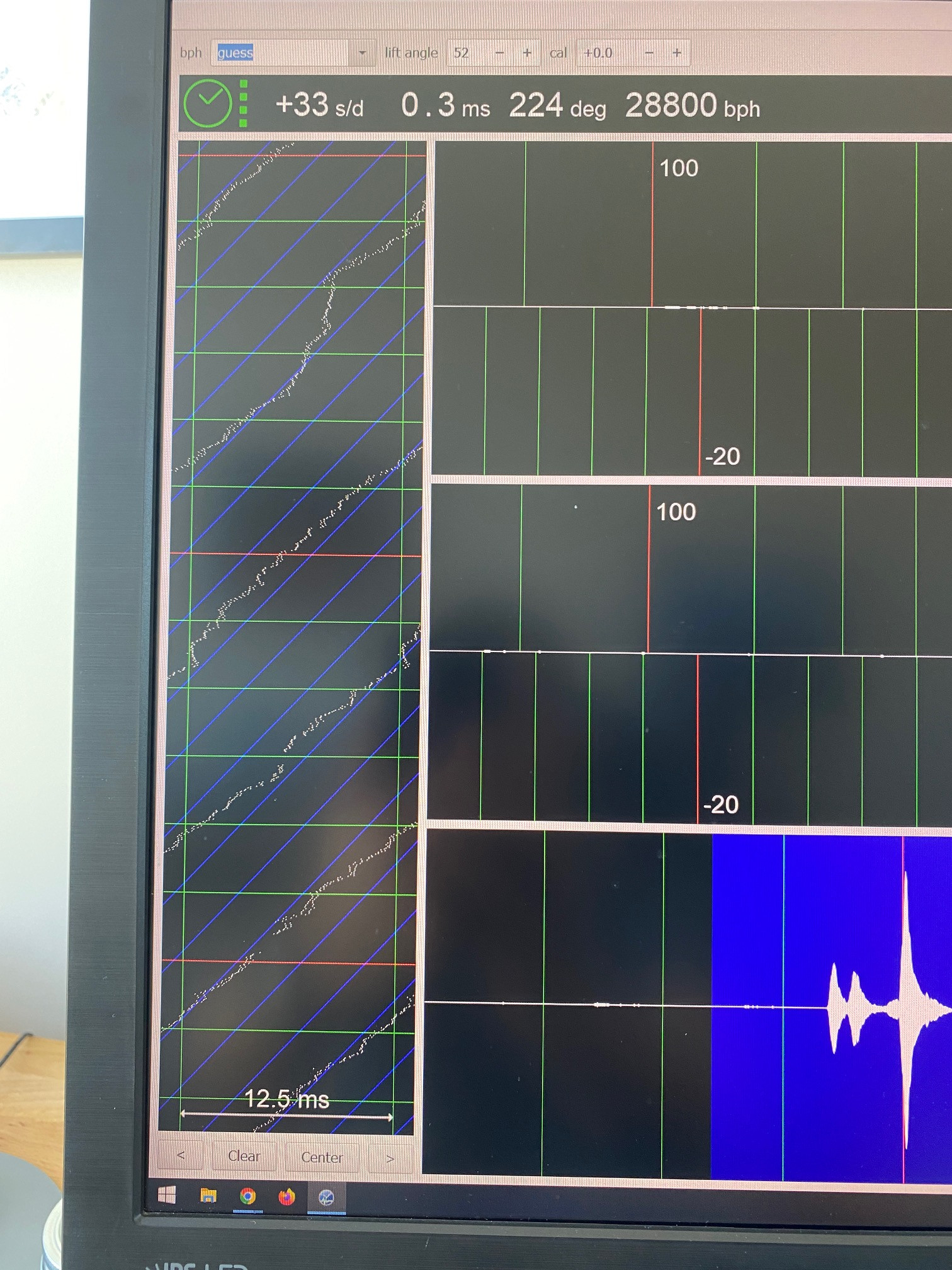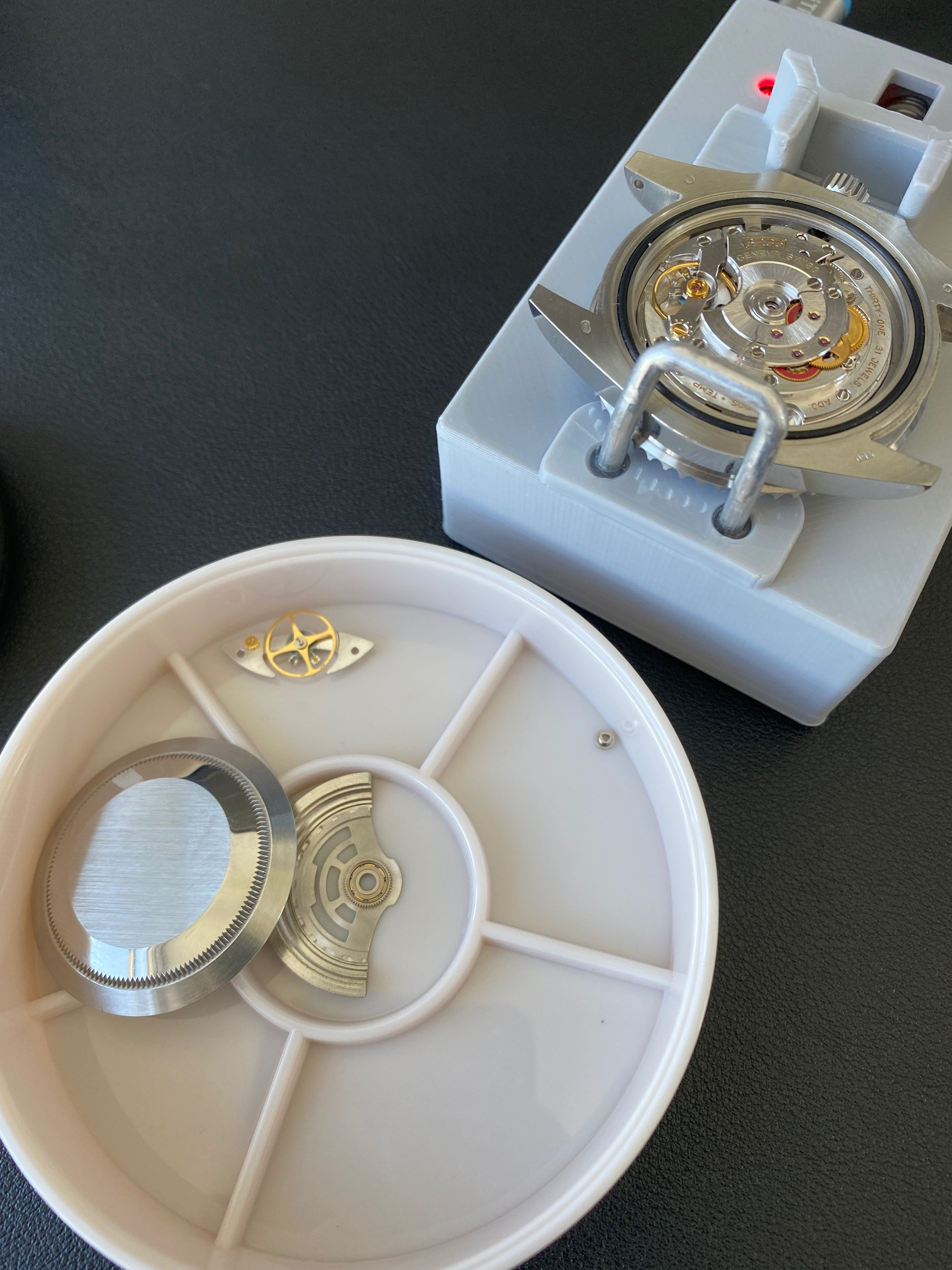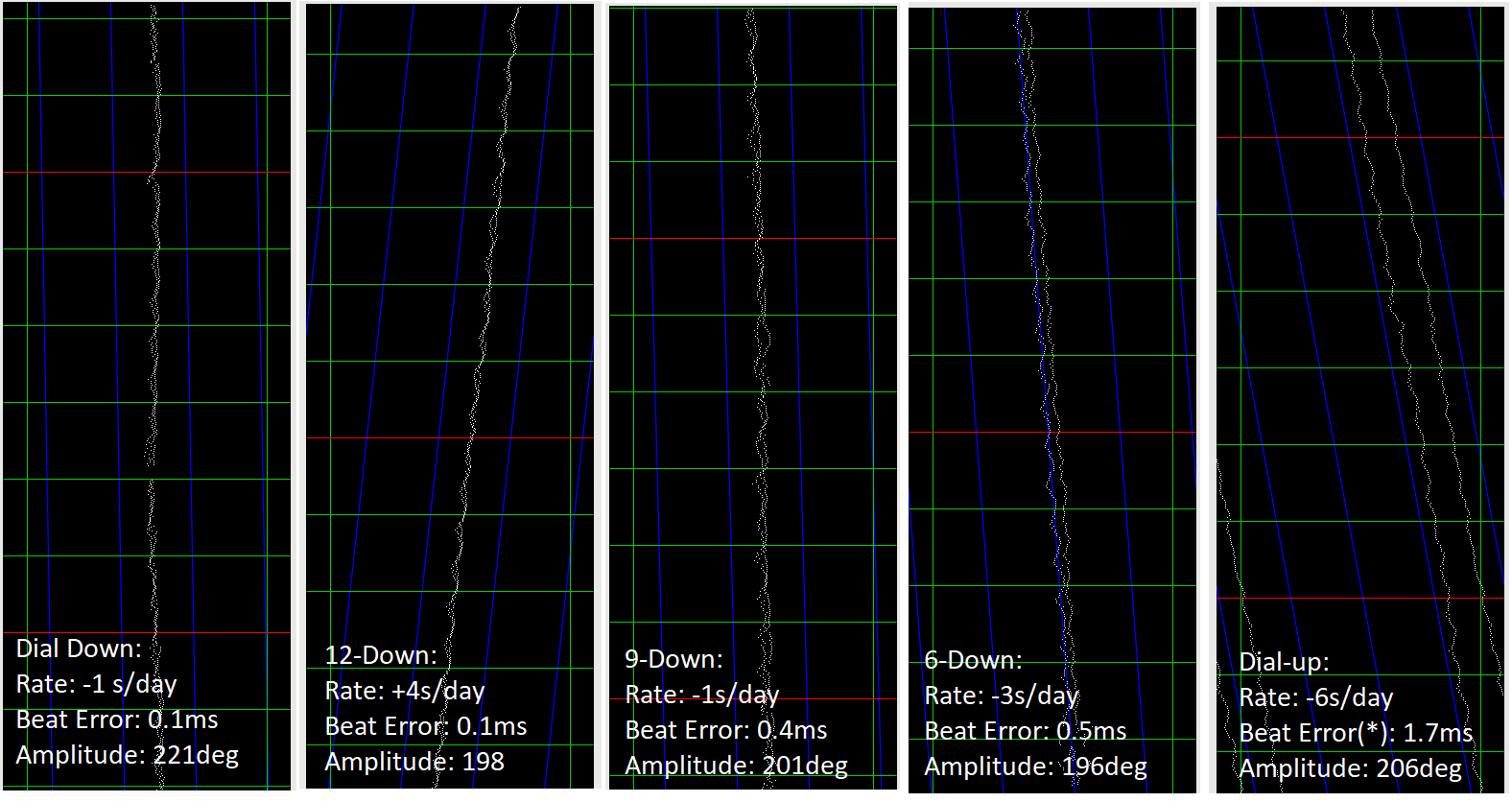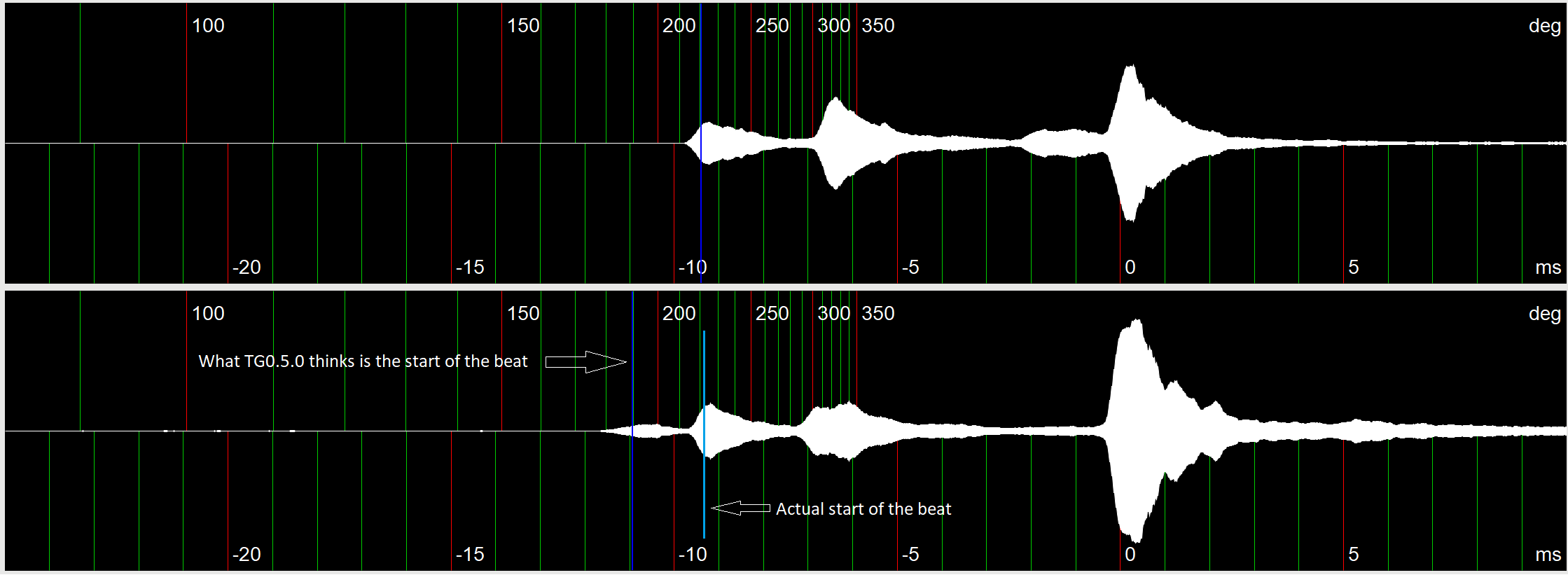I have a beautiful VSF Cookie Monster in my collect. I love it. But it's by far the worst at keeping time. I've tried to regulate it half a dozen times, but invariably, after a few days it'll be running several minutes fast. Worse, when I recently put it on my timegrapher and left it in one position for a few minutes, I saw a truly horrifying result:

Deus Ex Machina... there is a ghost in this machine. The movement is not stable and won't keep time even when it's sitting perfectly stable on my benchtop. This made me think it was time to give Cookie a service.
But before I went down the road of pulling everything apart, cleaning, and re-assembling; I thought maybe I should try swapping in the spare VSF 3235 balance complete that I had on hand after my VSF 3235 gen parts replacement project. This would be a lot simpler, and I figured it'd be a good way to see where the ghost was lurking.
The balance swap was easy, I didn't even need to remove the movement from the case.

And after neutralizing the beat error, and regulating out the rate, this is what I saw on the timegrapher:

I have exorcised the demons!!!
Note: the beat error in the dial down position appears to be an error in the Time Grapher's algorithm for detecting the start of one of the beats in that position. When I look at the actual sound profile of the tick-tock in the dial down position, it looks like TG0.5.0 is jumping the gun a little bit. This is why I prefer using a computer for my timegrapher -- it gives me a lot more information than a simple plot on a cheap LCD.

While I'm a little sad that my Sunday project (full service of the cookie monster) isn't going to happen, I'm extremely pleased with the stability I have after swapping the balance. And I guess the lesson for me is that there's quite a bit of variability in the stability between VSF parts.

Deus Ex Machina... there is a ghost in this machine. The movement is not stable and won't keep time even when it's sitting perfectly stable on my benchtop. This made me think it was time to give Cookie a service.
But before I went down the road of pulling everything apart, cleaning, and re-assembling; I thought maybe I should try swapping in the spare VSF 3235 balance complete that I had on hand after my VSF 3235 gen parts replacement project. This would be a lot simpler, and I figured it'd be a good way to see where the ghost was lurking.
The balance swap was easy, I didn't even need to remove the movement from the case.

And after neutralizing the beat error, and regulating out the rate, this is what I saw on the timegrapher:

I have exorcised the demons!!!
Note: the beat error in the dial down position appears to be an error in the Time Grapher's algorithm for detecting the start of one of the beats in that position. When I look at the actual sound profile of the tick-tock in the dial down position, it looks like TG0.5.0 is jumping the gun a little bit. This is why I prefer using a computer for my timegrapher -- it gives me a lot more information than a simple plot on a cheap LCD.

While I'm a little sad that my Sunday project (full service of the cookie monster) isn't going to happen, I'm extremely pleased with the stability I have after swapping the balance. And I guess the lesson for me is that there's quite a bit of variability in the stability between VSF parts.
